As becomes quickly apparent when looking at period newspapers, however, the phrase "double rows of teeth" did not always mean just a healthy smile. In some cases it actually does appear to have been used to indicate the presence of multiple, concentric rows of teeth in the same portion of the jaw. This presents an interesting historical-linguistic problem: if the phrase was used in multiple ways, how can we determine what the intent was when it was used to describe the teeth of skeletons? As an archaeologist, my inclination is to collect data and look for patterns. If the use of these idiomatic phrases was not simply random (i.e., there were cultural "rules" underlying their use) we may be able to recognize patterns in the way the phrases were used that will help us understand their intended meanings. If we can discover patterns in circumstances where the intent can be ascertained directly (i.e., where the phrase was used to describe something known), we may be able to understand the intent of the phrases in cases that are less clear (i.e., where the phrase was used to describe something unknown, such as a skeleton).
I collected 160 examples of the use of the phrases "a double row of teeth" and "double rows of teeth" from newspaper stories dating from 1822 to 1992. (Note: to cut down a little on wordiness, I'm just going to say "double rows of teeth" for the rest of this post - I'm including both variants of the phrase in my analysis, however.) I used both Newspapers.com (again, taking one for the team by ponying up my $7.95/month subscription fee) and the newspapers available via the Library of Congress. I'm sure the sample size could be greatly increased with access to more newspapers, but this is enough to get started and see some patterns.
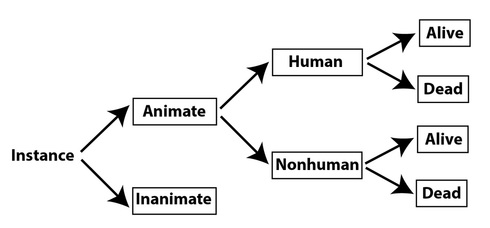 Key used to classify what was being described by the phrase "double rows of teeth."
Key used to classify what was being described by the phrase "double rows of teeth." Next, I classified each example according to whether it was describing rows of teeth that were "opposed" or "layered." Opposed rows of teeth are like those found in a normal human mouth: there are two rows of teeth (one in each jaw) that meet when you bite down. Layered rows of teeth, in contrast, are present when there are multiple rows of teeth in each jaw, one behind another (like in a shark). In cases where I could not determine whether the phrase was intended to describe opposed rows or layered rows, I coded it as "indeterminate."
An analysis of these data revealed several interesting things:
- First, the phrase "double rows of teeth" peaked in popularity at about the same time as reports of giant skeletons;
- Second, the phase "double rows of teeth" was used to describe both humans and animals of various kinds, as well as inanimate objects such as rakes and combs;
- Third, the configuration of teeth described by the phrase shifts over time: while more commonly used to describe opposed rows of teeth in the mid- late-1800s, it is now almost exclusively used to described layered rows of teeth.
Put these together and they explain both (1) why the phrase "double rows of teeth" appears to be strongly associated with "giant skeletons" (although its not) and (2) why it is so commonly misinterpreted today among those who don't bother to try to understand the context of what they're looking at. I'll go through the points one by one.
 Plot of number of examples of phase "double rows of teeth" in database by decade.
Plot of number of examples of phase "double rows of teeth" in database by decade. First, let's look at the use of the phrase through time. The figure to the right shows the occurrence of my 160 examples by decade. The occurrence of the phrase "double rows of teeth" peaks in the late 1800s, very similar to the time when accounts of "giant" skeletons are at their peak in US newspapers (see this post for a graph from my in-progress database of giant reports).
If you're a giantologist, you might have just said "ah ha!" thinking that the similar tiime frame of the peaks supports your idea that the finding/reporting of giant skeletons with double rows of teeth is responsible for both distributions. Before you start celebrating, I should tell you that only a handful (perhaps three out of 160) of the examples in my database have anything to do with the possible remains of "giant" skeletons. That's next.
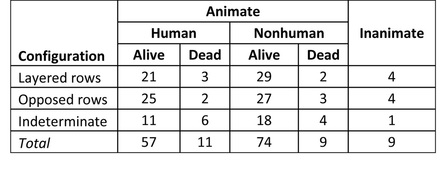
The large majority (131 out of 160) of the examples that I located used the phrase "double rows of teeth" to refer to living people and animals - not giant skeletons. I also found a handful of examples that used the phrase to describe inanimate objects.
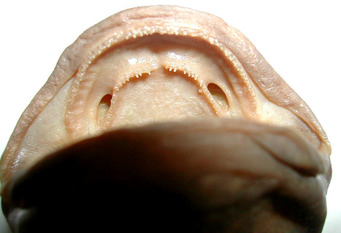 The Hellbender, a large salamander native to the eastern United States, has two concentric rows of teeth.
The Hellbender, a large salamander native to the eastern United States, has two concentric rows of teeth. 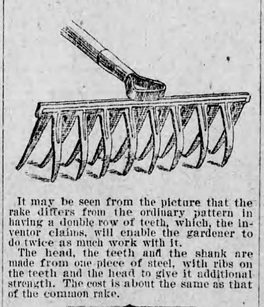
“It was formerly the custom to bury combs with the dead, which clearly shows that these articles of the toilet had sacred significance in the eyes of the people of the old world. The comb buried with St. Cuthbert and now preserved at Durham, England, is of ivory and measures 6 ¼ inches in length and 4 ½ inches in width. It is ascribed to the eleventh century and has a double row of teeth, divided by a broad, plain band, perforated in the middle with a round hole for the finger.”
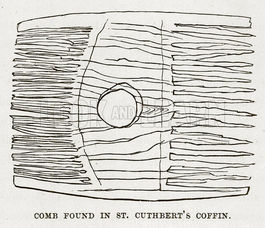
It is clear that the phrase "double rows of teeth" was meant in some cases to describe opposed rows of teeth and in others to describe layered rows of teeth. The balance of these intents has not stayed constant through time. When I take my dataset and calculate the percentage of these two different uses by decade, the results clearly show a shift through time away from descriptions of opposed rows and toward descriptions of layered rows:
I think it's pretty clear that the phrase "double rows of teeth" was an idiom that existed and was used quite independently of "giant skeletons:" the apparent association between the two is created not by an actual relationship, but by a temporal coincidence. It is a mirage produced by the overlap of the period of popularity in reporting "giant skeletons" and the period of popularity of an idiomatic phrase that was used to describe a wide range of things.
I'm not sure how long it will take giant enthusiasts to understand this component of the story or to learn the lesson about putting their accounts of giants in context. Just last week I heard an interview with an author of one of the recent books alleging that the Nephilim built the earthen mounds of North America STILL talking about "double rows of teeth" as a marker of prehistoric populations.
It's idiotic and disingenuous at this point to continue to say such things.
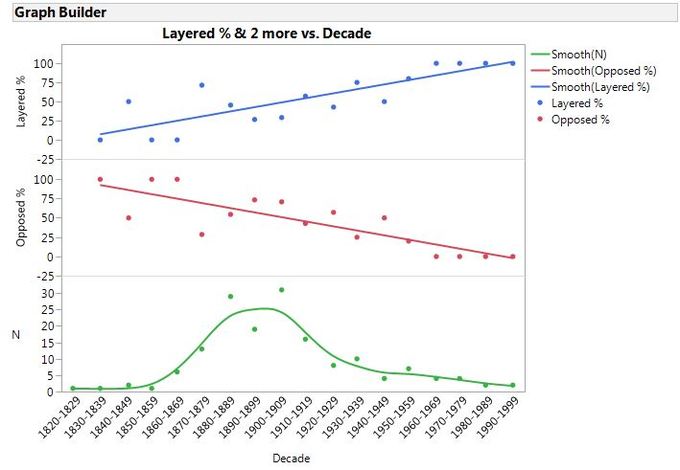


 RSS Feed
RSS Feed
